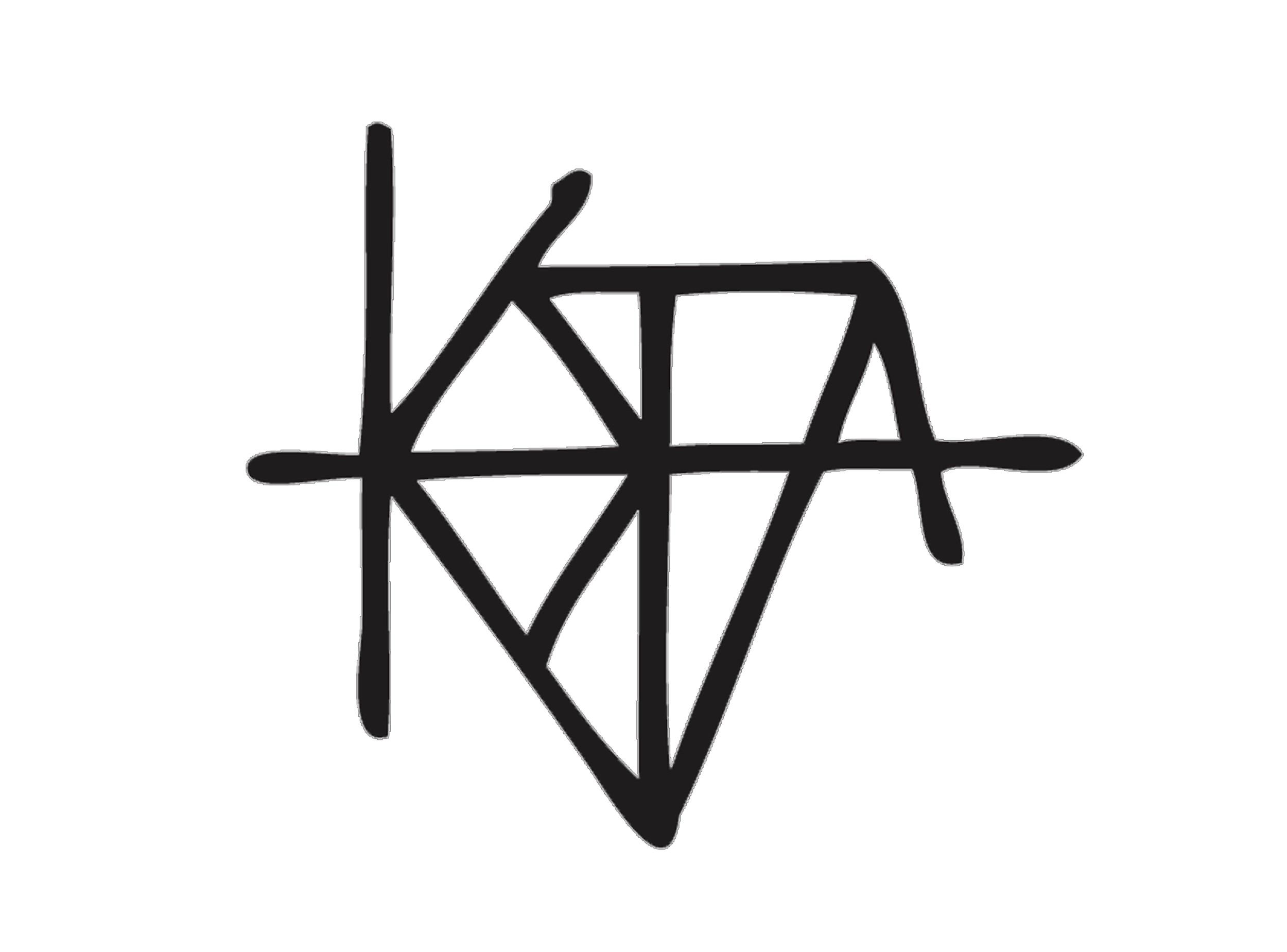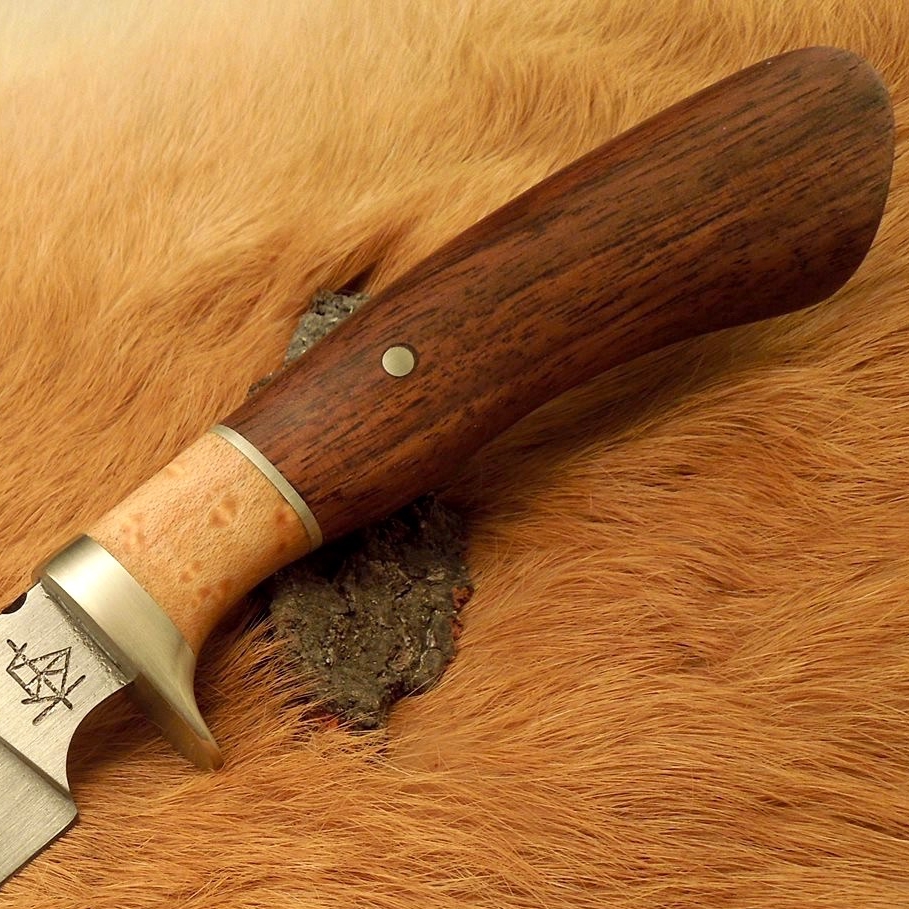Handle Materials
Handle materials have a large affect on the function, feel, and appearance of a knife. Wood tends to be the most versatile material, with all different figures, weights, and durabilities from around the world.
Black walnut with a birdseye maple spacer
Domestic Woods
For the most part, domestic woods are used an inexpensive material or utility pieces, however, there are some higher end woods that grow here in the US. The several varieties of figured maple being most common, black walnut and cherry are often used, and available figured. Desert Ironwood is the most pricey and hardest of the available domestic woods. Many woods are available spalted, which is the beginning stage of rot. Spalting produces an interesting pattern of dark lines and variations in color.
Purpleheart with a dividing nickel silver and black spacer
Exotic Woods
While more expensive, exotic woods are usually more attractive than domestics, and many are more durable and hard. There are woods available in many different colors, such as purple heart, which finishes with a deep purple color, or bloodwood, which finishes vivid red. There are exotics with beautiful figures that play off the light and high contrasting grain patterns, and woods so dense they machine similar to metals.
Black cherry burl
Burl Woods
Burls are a deformity in grain structure found in many different trees, caused by bacteria, viruses, diseases, etc. In a burl, the grain knots around, going randomly in every direction, causing unpredictable figures. Due to the rarity, burls are often much more expensive than plain wood, but each piece is unique and complex.
Black paracord with lanyard
Paracord
Paracord makes for a comfortable and secure grip for a basic knife. Not the prettiest material available, but it is very practical and can be unwrapped to produce several feet of high strength cord if ever needed.
Fire scale finish on a blacksmiths knife
Bare Steel
The most basic handle available, a bare steel handle can either be forged to shape such as on a blacksmiths knife, or ground to shape and left bare. These handles are recommended to be finished with fire scale or a patina to prevent damaging rust.
Stabilized Wood
Stabilization is the process of soaking wood in resin under a vacuum, so that it fills the wood throughout. All burls and spalted woods should be stabilized, as it prevents moisture movement and the potential of resulting splits. The resin used can also be dyed to change the color of the host wood.






